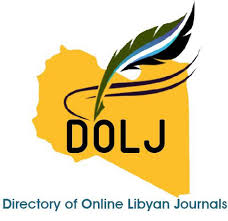An Evaluation of Retention Strategies in Educational and Private Hospitals in Benghazi: Insights from Healthcare Providers' Satisfaction and Administrative Perspectives
DOI:
https://doi.org/10.54361/LJMR.19.1.33Keywords:
Healthcare retention, job satisfaction, hospitals, Benghazi, workforce stabilityAbstract
Background: Job satisfaction and effective retention strategies are essential for the stability of health systems (HS), stable systems are the basis for consistent, high-quality care and equitable access to services. Aim: To assess the presence of an efficient retention strategy in public and private hospitals in Benghazi. To measure HCWs' job satisfaction rate. Materials and Methods: This study is a descriptive quantitative, cross–sectional study done in four public and two private hospitals in Benghazi, which are the biggest teaching hospitals that agreed to participate in the study, during two months from January and February 2024. Ethical approval (IRB) was obtained from the research ethical committee (REC) of the Libyan International University (LIMU). Two questionnaires were used: The first questionnaire was used for HCWs (doctors and nurses) to examine the satisfaction rate. The second questionnaire for the administrators of the six hospitals to asses the presence or absence of retention strategy. Results: Despite the results of the research indicating that there is a retention strategy in two-thirds of hospitals (66.6%), the overall job satisfaction rate of doctors and nurses in these six hospitals (public and private) was satisfactory (2.49. The lowest satisfaction rates were recorded in the doctor's resting place, and the highest satisfaction rates in the study. Conclusion: The research results indicated a satisfactory job satisfaction rate of HCWs in both public and private sectors, although there is a retention strategy in more than half of the facilities. The discrepancy in the results can be due to either the retention strategic plan being deficient, not well applied. Also in the private sector, which was suffering from noticeable dissatisfaction, which was due to the higher expectations of its employees than in the public sector.
Downloads
References
1- World Health Organization. Global strategy on human resources for health: Workforce 2030 [Internet]. Geneva: World Health Organization; 2016 [cited 2025 Mar 22]. Available from https://iris.who.int/bitstream/handle/10665/250368/9789241511131-eng.pdf.
1. 2-Dieleman M, Hilhorst T. Governance and human resources for health. Hum Resour Health. 2011 Nov ;9(29).
2- Willis-Shattuck M, Bidwell P, Thomas S, Wyness L, Blaauw D, Ditlopo P. Motivation and retention of health workers in developing countries: a systematic review. BMC Health Serv Res 2008 Dec; 8(247): 516-523.
2. 4. Schaufeli WB, Leiter MP, Maslach C. Burnout: 35 years of research and practice. Career Dev Int. 2009 June; 14(3): 204-220.
3. 5. Townsley AP, Li-Wang J, Katta R. Healthcare workers’ well-being: a systematic review of positive psychology interventions. Cureus. 2023 Jan;15(1): e34102
4. 6. World Health Organization .Health workforce. WHO [Internet]. 2024 [cited 2025 Mar 22]. Available from: https://www.who.int/health-topics/health-workforce
5. 7. Sovold LE, Naslund JA, Kousoulis AA, Saxena S, Qoronfleh MW, Grobler C, Münter L. Prioritizing the mental health and well-being of healthcare workers: an urgent global public health priority. Front Public Health. 2021 May; 9(1):1-12.
6. 8- Shanafelt TD, Noseworthy JH. Executive leadership and physician well-being. Mayo Clin Proc. 2019 Feb ;92(1):129-146.
7. 9. Sigurdsson EL. The wellbeing of health care workers. Scand J Prim Health Care. 2021 Dec; 39(4): 389-390.
8. 10. Nkomazana O, Mash R, Shaibu S, Phaladze N. Stakeholders’ perceptions on shortage of healthcare workers in primary healthcare in Botswana: focus group discussions. PLoS One. 2015 Aug;10(8): e0135846.
9. 11. Chen SY, Wu WC, Chang CS, Lin CT, Kung JY, Weng HC, Lin YT, Lee SI. Organizational justice, trust, and identification and their effects on organizational commitment in hospital nursing staff. BMC Health Serv Res. 2015 Sep;15(363).
10. 12. Alharbi K, Aloyuni S. The importance of training and development of employees in improving the quality of health services. Int J Health Sci. 2023 Aug; 7(1): 2190-2201.
11. 13. Hussain A, Yusoff R, Banoori S, Khan A, Khan M. Enhancing effectiveness of employees through training and development in the health care department of Khyber Pakhtunkhwa Pakistan: a literature review. Int Rev Manag Mark. 2016 Oct; 6(4):731-737.
12. 14. Zhou Q, Sacramento C, Martinaityte I. Work meaningfulness and performance among healthcare professionals: the role of professional respect and participative management. J Bus Res. 2023 Aug; 163 (2023).
13. 15. Alameddine M, Yassoub R, Mourad Y, Khodr H. Stakeholders’ perspectives on strategies for the recruitment and retention of primary health care employees in Qatar: a qualitative approach. INQUIRY. 2017 July; 54: 1-8
14. 16. Alsawahli H. Doctors’ motivation in the Ministry of Health and Population – Egypt: challenges and opportunities. Egypt; 2019 [cited 2025 Mar 22]. Avalibel from: https://fount.aucegypt.edu/cgi/viewcontent.cgi?article=1760&context=etds
15. 17. Buchan J. Reviewing the benefits of health workforce stability. Hum Resour Health. 2010; 8(29).
16. 18. de Vries N, Boone A, Godderis L, Bouman J, Szemik S, Matranga D, de Winter P. The race to retain healthcare workers: a systematic review on factors that impact retention of nurses and doctors in hospitals. INQUIRY. 2023 Jan; 60(60).
17. 19. Buchan J. Reviewing the benefits of health workforce stability. Hum Resour Health. 2010 Dec; 8(1).
18. 20. Bou-Karroum L, Daou KN, Nomier M, El Arnaout N, Fouad FM, El-Jardali F, Akl EA. Health care workers in the setting of the ‘Arab Spring’: a scoping review for the Lancet-AUB Commission on Syria. J Glob Health 2018 Jun; 9(1): 010402.
19. 21. Lin TK, Werner K, Kak M, Herbst CH. Health care worker retention in post-conflict settings: a systematic literature review. Health Policy Plan. 2022 Jan; 38(1):109-121.
Downloads
Published
Issue
Section
License
Copyright (c) 2025 Mahmoud .M. Edbesh, Ali .A. Elmabsout , Moutaz .F. Gebril (Author)

This work is licensed under a Creative Commons Attribution-NonCommercial-NoDerivatives 4.0 International License.
Open Access Policy
Libyan journal of medical Research (LJMR).is an open journal, therefore there are no fees required for downloading any publication from the journal website by authors, readers, and institution.
The journal applies the license of CC BY (a Creative Commons Attribution 4.0 International license). This license allows authors to keep ownership f the copyright of their papers. But this license permits any user to download , print out, extract, reuse, archive, and distribute the article, so long as appropriate credit is given to the authors and the source of the work.
The license ensures that the article will be available as widely as possible and that the article can be included in any scientific archive.
Editorial Policy
The publication of an article in a peer reviewed journal is an essential model for Libyan journal of medical Research (LJMR). It is necessary to agree upon standards of expected ethical behavior for all parties involved in the act of publishing: the author, the journal editorial, the peer reviewer and the publisher.
Any manuscript or substantial parts of it, submitted to the journal must not be under consideration by any other journal. In general, the manuscript should not have already been published in any journal or other citable form, although it may have been deposited on a preprint server. Authors are required to ensure that no material submitted as part of a manuscript infringes existing copyrights, or the rights of a third party.
Authorship Policy
The manuscript authorship should be limited to those who have made a significant contribution and intellectual input to the research submitted to the journal, including design, performance, interpretation of the reported study, and writing the manuscript. All those who have made significant contributions should be listed as co-authors.
Others who have participated in certain substantive aspects of the manuscript but without intellectual input should only be recognized in the acknowledgements section of the manuscript. Also, one of the authors should be selected as the corresponding author to communicate with the journal and approve the final version of the manuscript for publication in the LJMR.
Peer-review Policy
- All the manuscripts submitted to LJMR will be subjected to the double-blinded peer-review process;
- The manuscript will be reviewed by two suitable experts in the respective subject area.
- Reports of all the reviewers will be considered while deciding on acceptance/revision or rejection of a manuscript.
- Editor-In-Chief will make the final decision, based on the reviewer’s comments.
- Editor-In-Chief can ask one or more advisory board members for their suggestions upon a manuscript, before making the final decision.
- Associate editor and review editors provide administrative support to maintain the integrity of the peer-review process.
- In case, authors challenge the editor’s negative decision with suitable arguments, the manuscript can be sent to one more reviewer and the final decision will be made based upon his recommendations.












